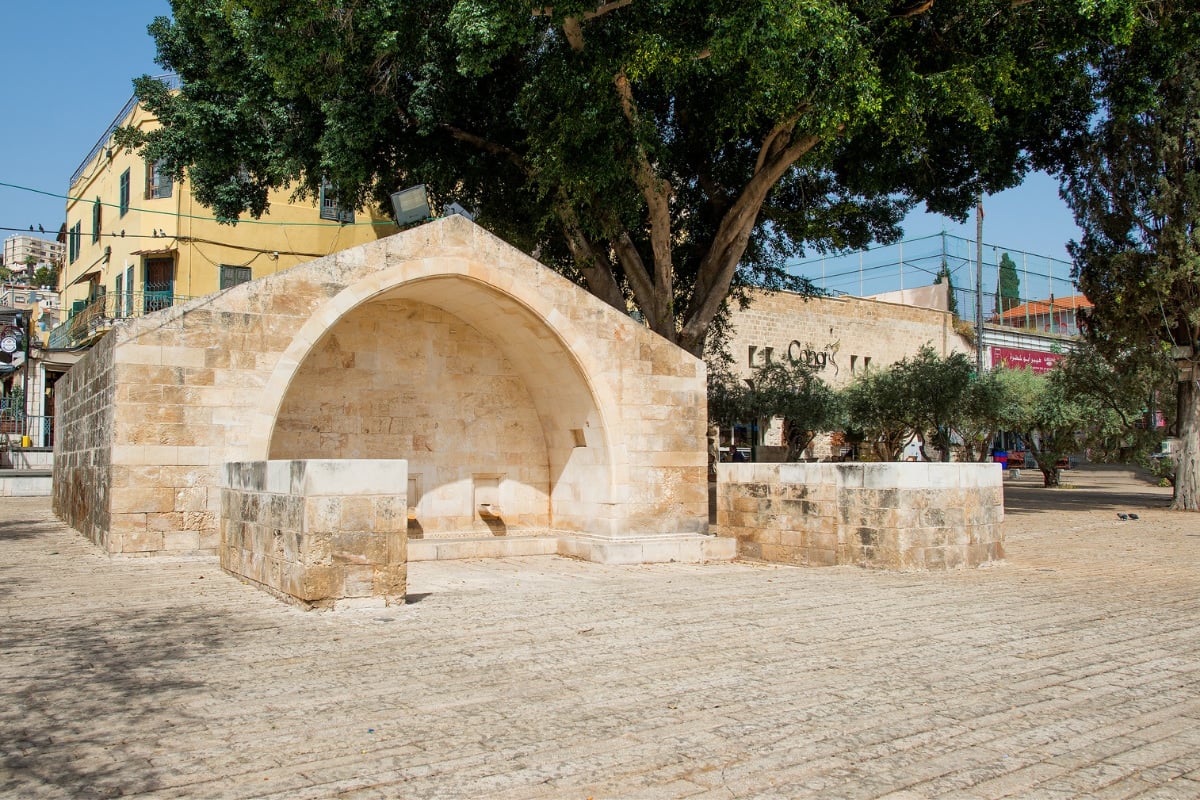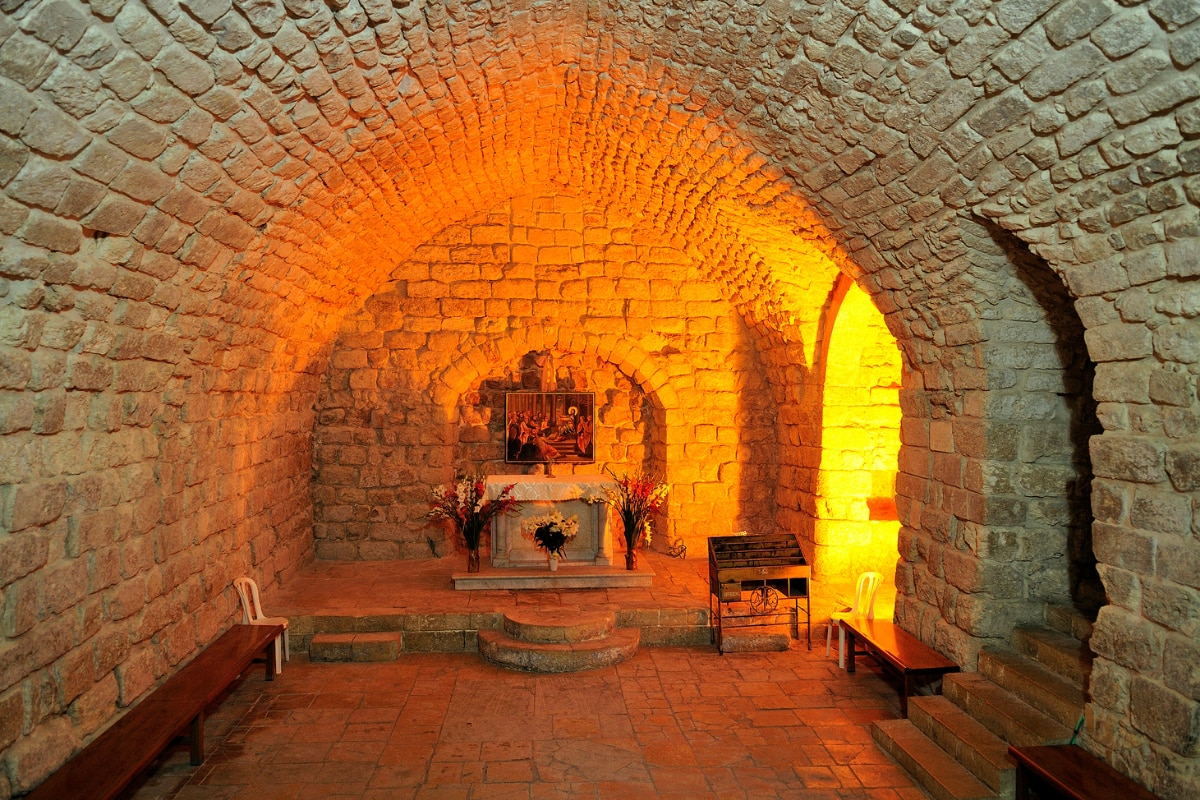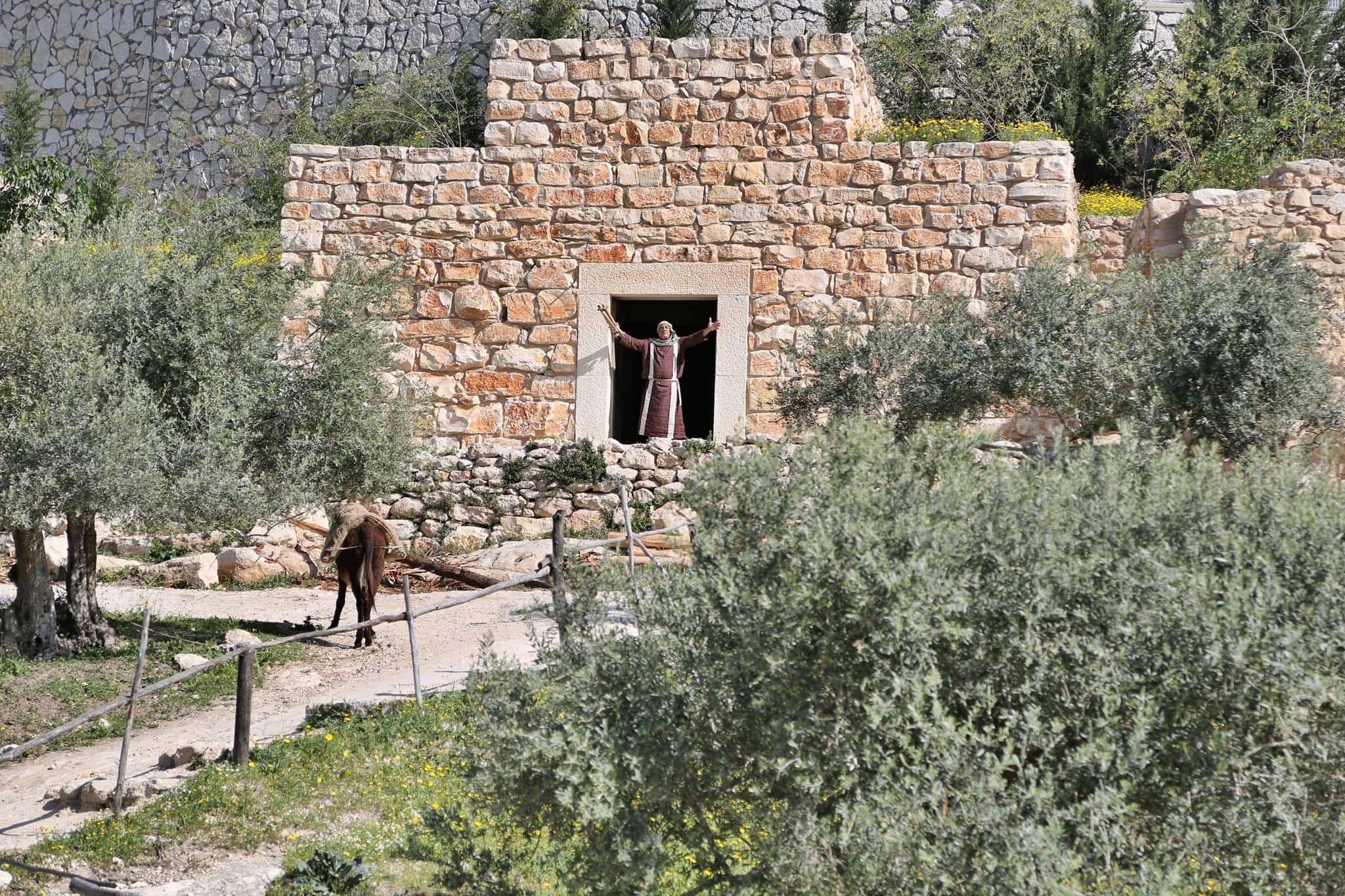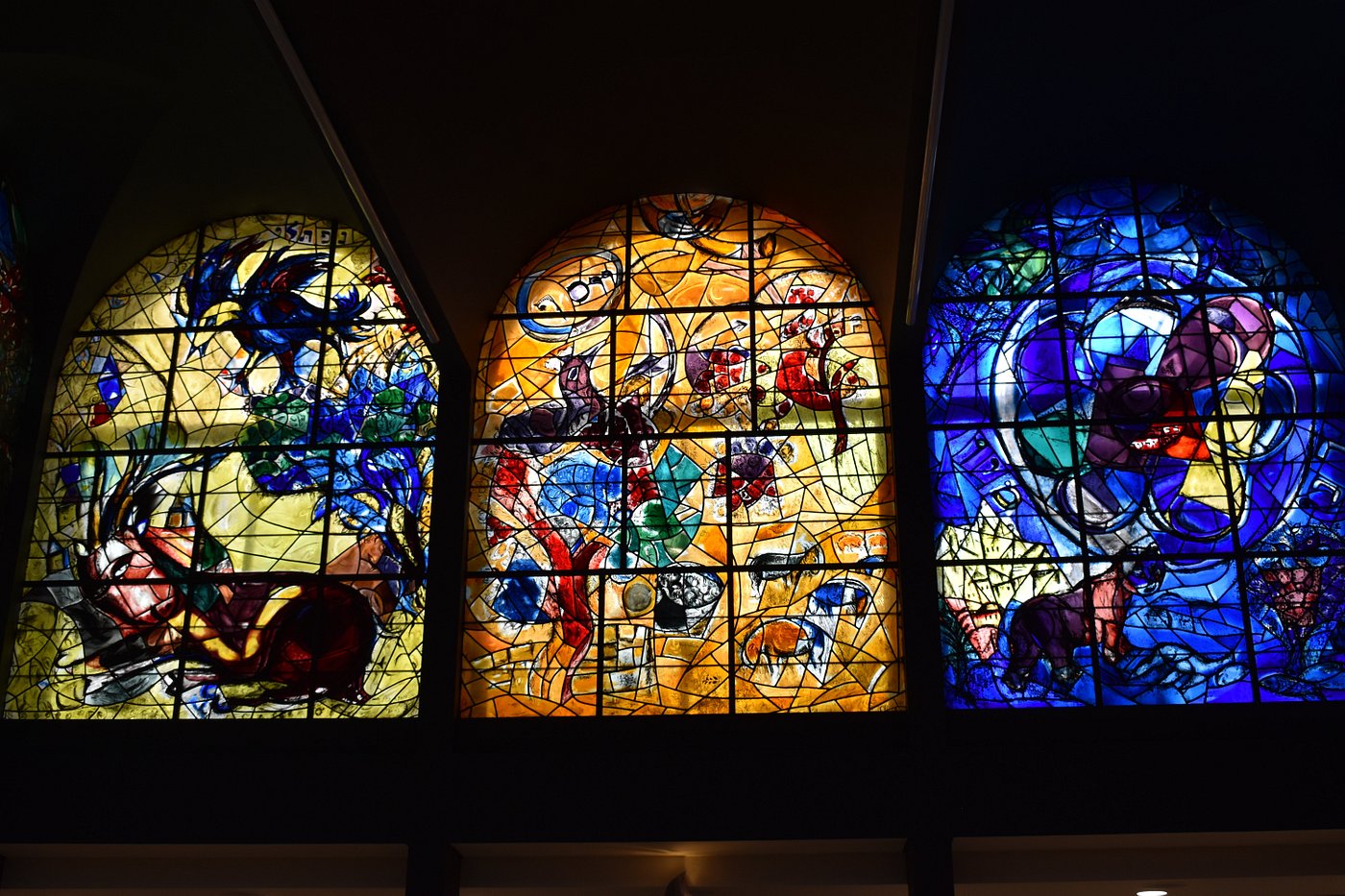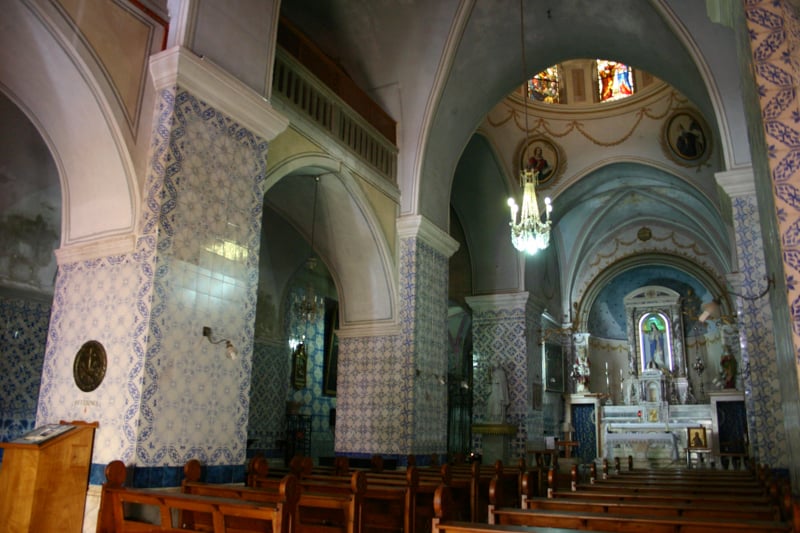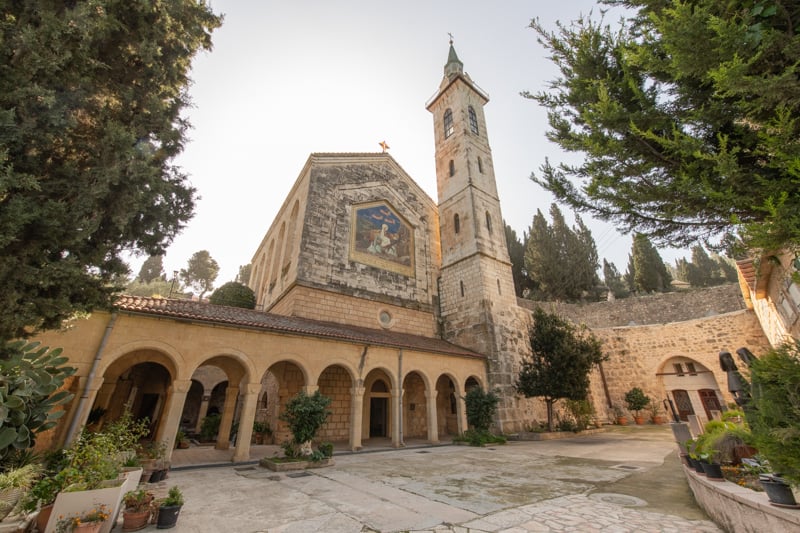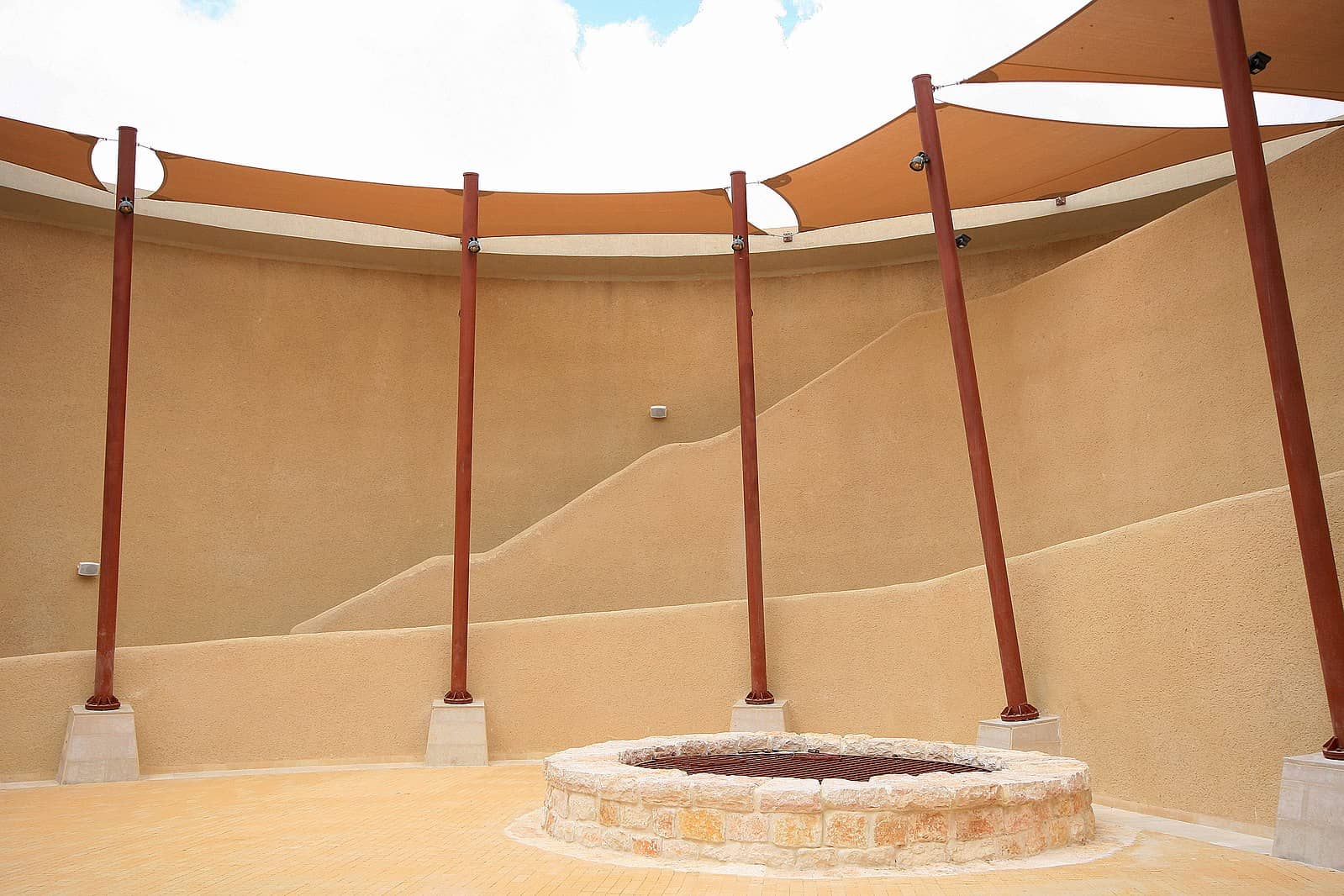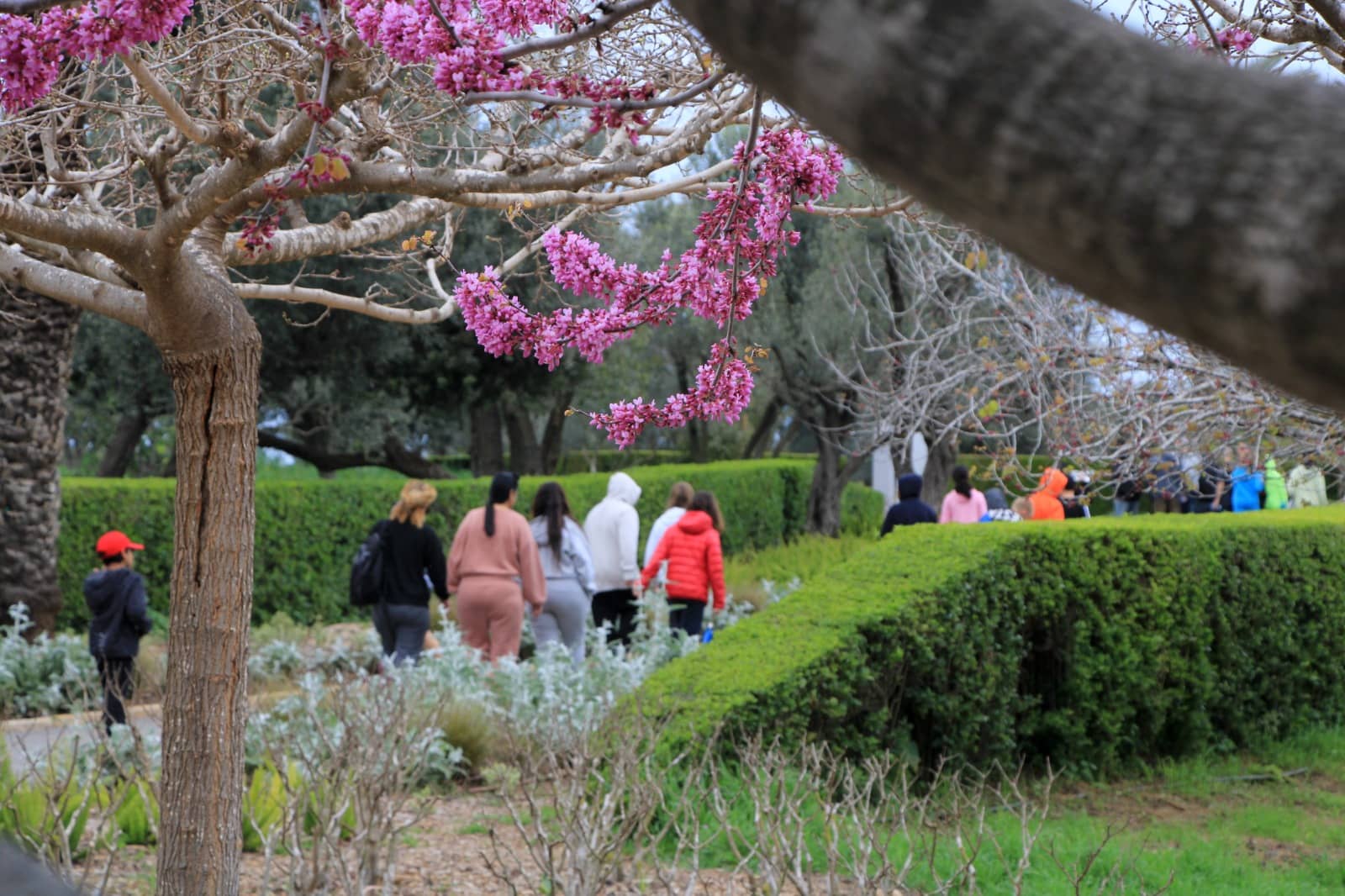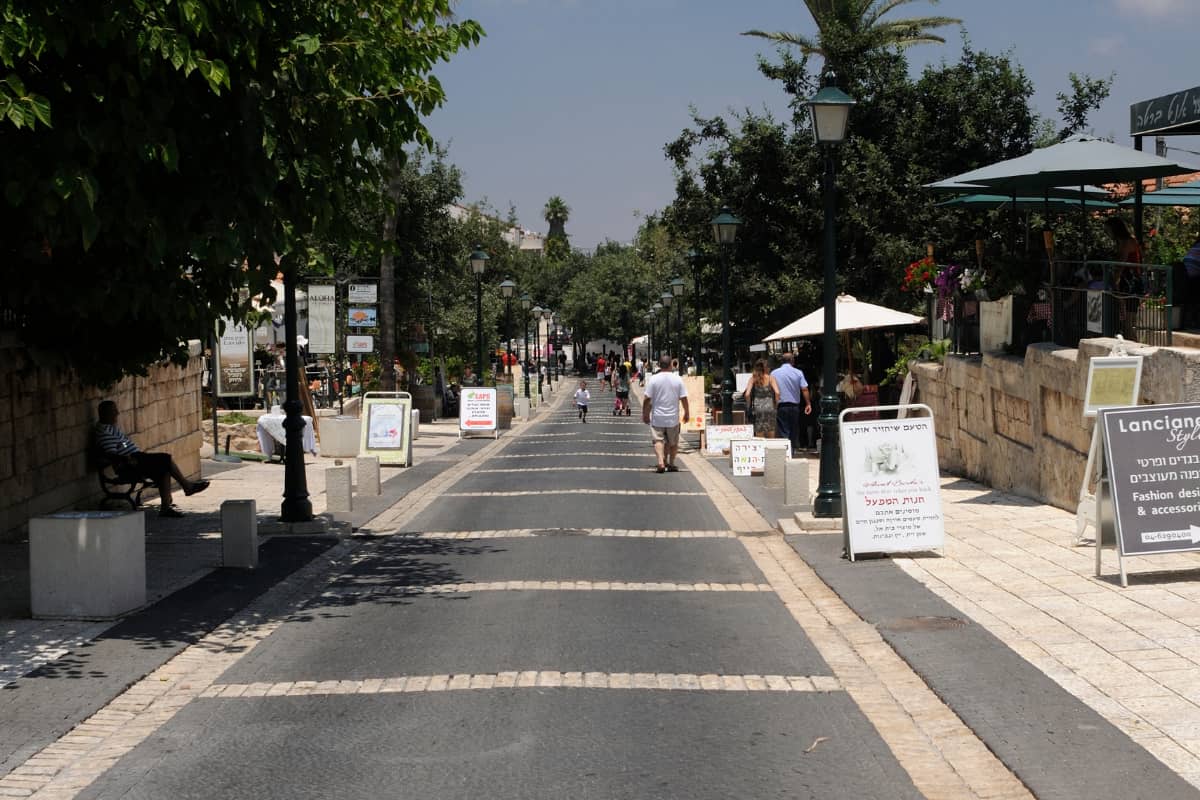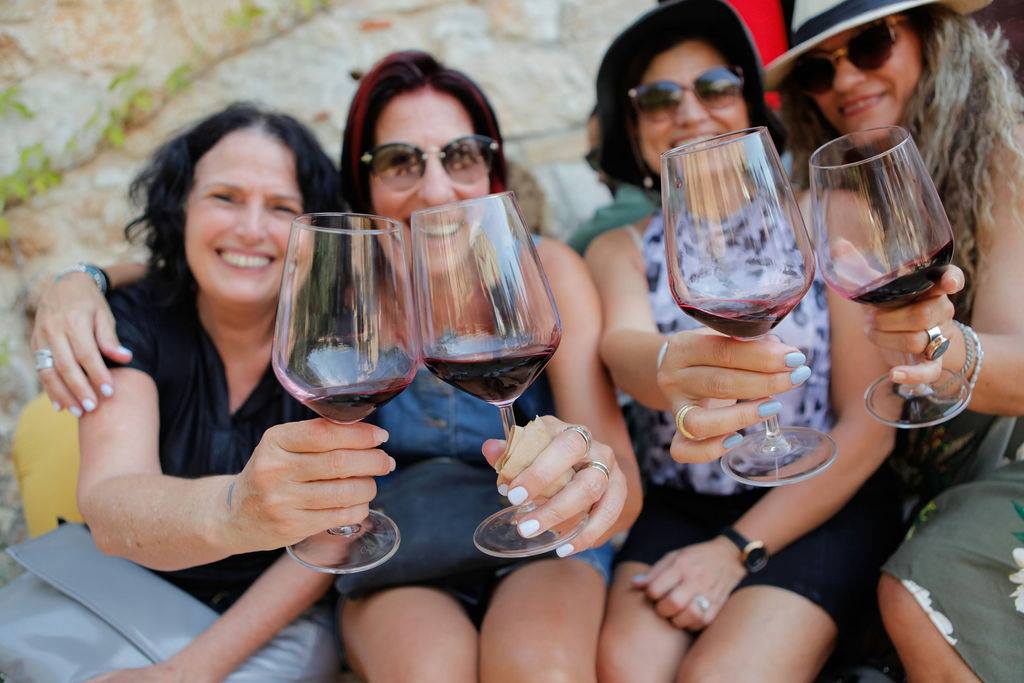The Church of the Visitation is a Catholic church in Ein Karem, Jerusalem, and honors the visit paid by the Virgin Mary, the mother of Jesus, to Elizabeth, the mother of John the Baptist. This is the site where tradition tells us that Mary recited her song of praise, the Magnificat, one of the most ancient Marian hymns.
The Bible doesn’t mention the birth place of John, it only states that Mary went to “a town in the hill country of Judea”. One tradition attributes the construction of the first church of Ein Karem to Empress Helena of Constantinople, Constantine I’s mother, who identified the site as the home of John’s father, Zachary.
The courtyard contains a statue of Mary and Elizabeth, and on the wall opposite the entrance to the lower church are forty-two ceramic tablets bearing the verses of the Magnificat in as many different languages. On the facade of the upper church is a striking mosaic commemorating the Visitation. Next to the church proper, a Crusader hall of the 12th century survived in good condition.
The lower church contains a narrow medieval barrel-vaulted crypt ending with a well-head from which, according to tradition, Elizabeth and her infant drank. The well is connected to a Roman or Byzantine overflow pipe running under the medieval floor. Also preserved are remains of the ancient church and beautiful mosaic floors.
The rock with a cleft next to the entrance of the medieval crypt is said to mark the site where the mountain opened up to hide Elizabeth and the infant John from Herod’s soldiers – this is the “Rock of Concealment”. This tradition is based on the 2nd-century apocryphal Protoevangelium of James 22:3. The interior of the lower church holds Italianate frescoes depicting Zachary at the altar of the Lord, the Visitation, and Elizabeth hiding her son during the Massacre of the Innocents.
The walls of the upper church are decorated with frescoes. Those on the southern wall are depicting five episodes, from left (east) to right (west):
The Council of Ephesus (431), which defined Mary as Theotokos or the Mother of God;
Mary protecting Christians with her mantle, according to the oldest extant hymn to the Blessed Virgin Mary as Theotokos, the Sub tuum praesidium;
the Wedding at Cana;
The Battle of Lepanto (1571), in which a united Catholic fleet defeated an Ottoman fleet, a victory ascribed to the help of the Virgin Mary under the title Mary Help of Christians and celebrated by the Catholic Church with the feast of Our Lady of the Rosary;
Duns Scotus, supported by the Franciscans, defending his thesis on the Immaculate Conception at the Sorbonne in Paris against the dissenting Dominicans.
Behind the altar, a fresco is showing Mary approaching through Judaea, with the Franciscan custos presenting her the model of the church and the Catholic patriarch of Jerusalem of the time in attendance.
Verses from the Magnificat are painted on the columns of the church. In the corners are the four cardinal virtues, and around the windows on the left side of the church are Christian writers (Fathers and Doctors of the Church) who have written about the Virgin Mary. The ceiling is painted in the Tuscan style of the 14th century.
